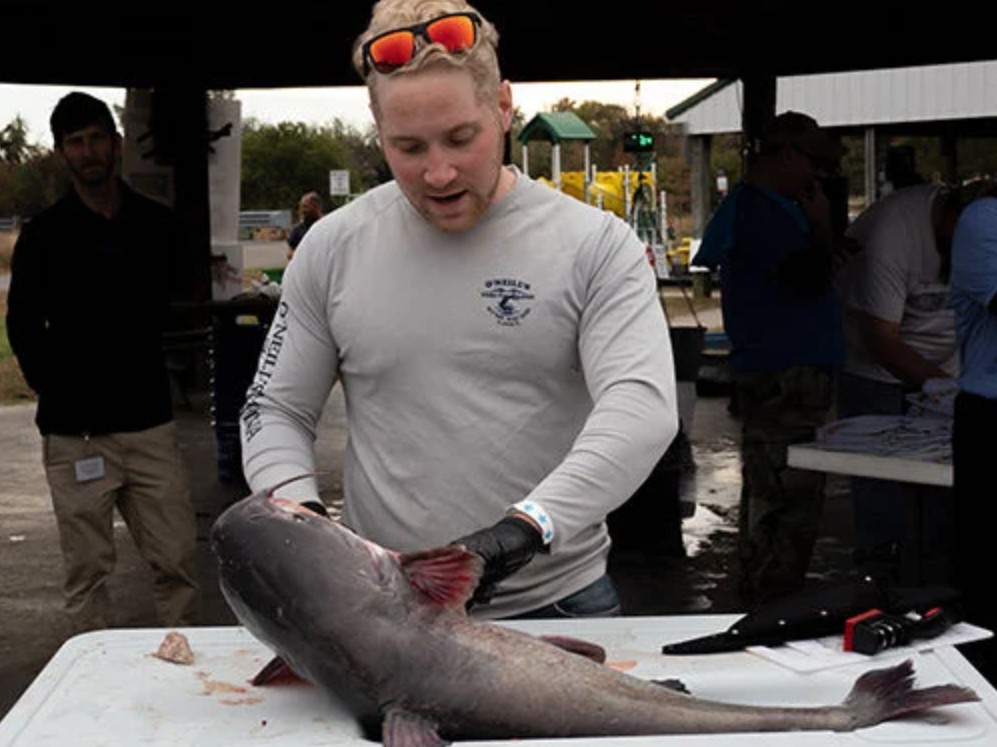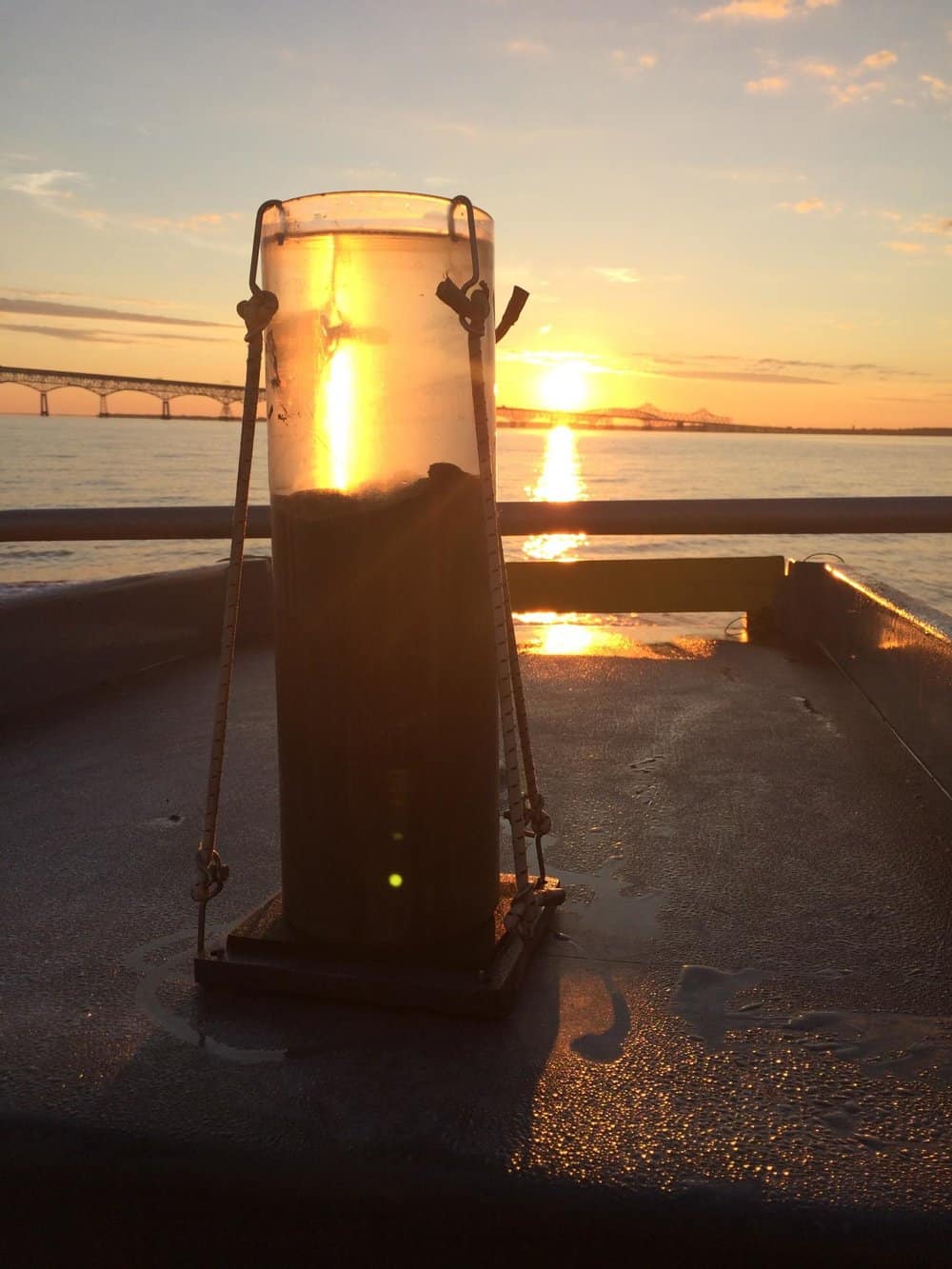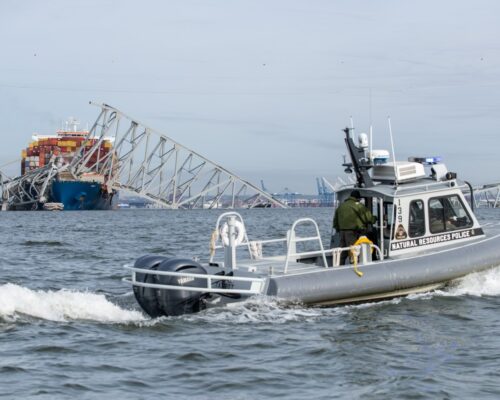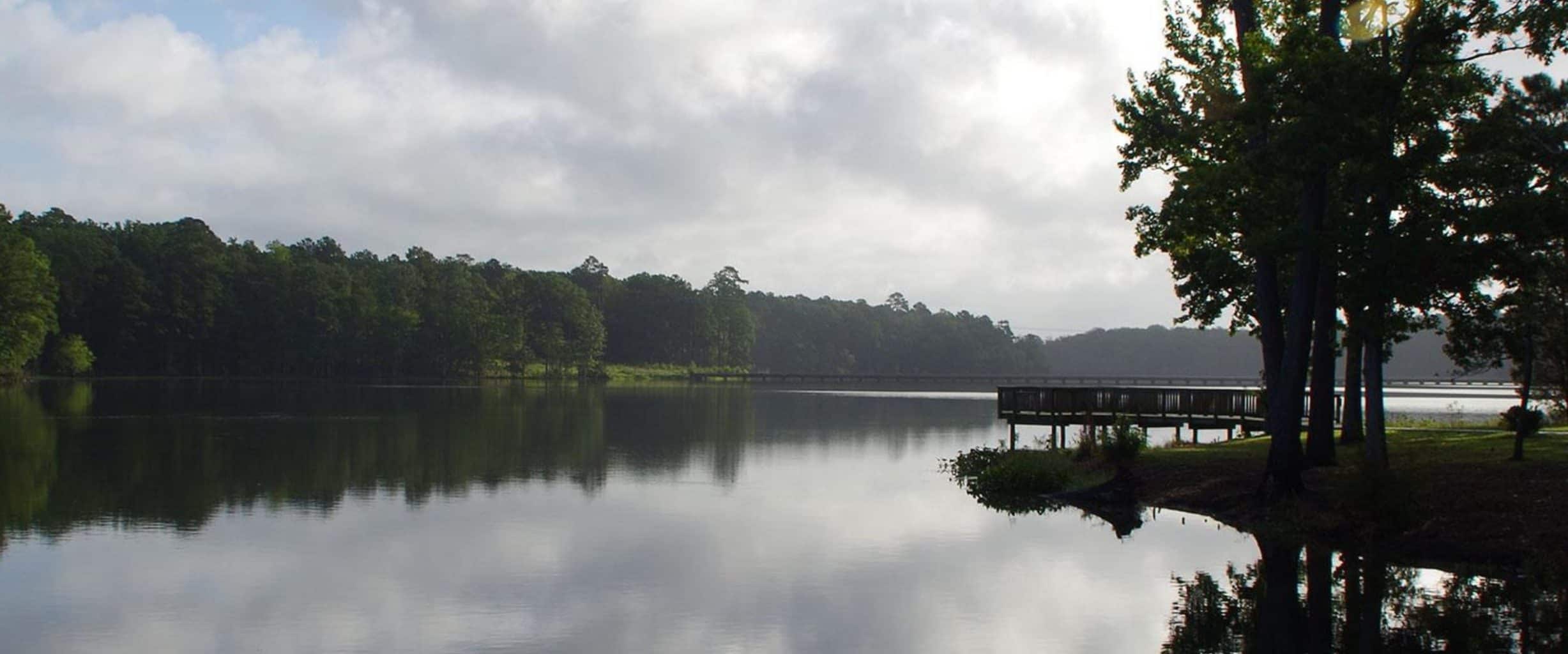In terms of appetite and willingness to gorge on just about anything, blue catfish have few peers in the Chesapeake Bay, experts say.
“They’re eating everything, anything they can get their mouths around,” said Noah Bressman, a fish biologist at Salisbury University in Maryland.
Now, a clearer picture is emerging of their ecological toll. Two new studies based in tidal rivers on opposite sides of the Bay show that the invasive species is gobbling up prized native aquatic life, such as menhaden and blue crabs, at high rates.
Chesapeake Bay Magazine spoke to Salisbury researchers when one of them caught a large blue catfish with an entire wood duck in its stomach.
The investigation conducted by Bressman’s team marks the first time that the nonnative’s eating habits have been examined on the eastern side of the Bay. Meanwhile, Virginia scientists have used a previous blue catfish stock assessment to produce another first: estimates of how much of each species is eaten within a major Chesapeake river.
The goal is to determine whether plentiful and voracious blue catfish are endangering the survival of their prey within a particular river or even the entire Bay. Many anglers and biologists have suspected as much. They just lack the scientific evidence to prove it.
The new research brings observers closer to that goal, said Dave Secor, a fisheries biologist with the University of Maryland Center for Environmental Science. “Some of these numbers show potentially very large impacts to predation of prey species,” said Secor, who wasn’t involved with the studies.
Blue catfish arrived in the Bay region in the 1970s, when Virginia introduced them as another option for anglers. They were originally thought to be restricted to freshwater. But the transplants, which are native to the South and Midwest, showed they could tolerate saltier water. Before long, they found their way into many rivers around the Bay.
Blue catfish can grow to more than 100 pounds, feeding on everything from underwater grasses to small striped bass. The issue prompted Maryland Gov. Wes Moore to ask the federal government to declare a fishery disaster in the state to open the door to financial assistance for watermen and seafood businesses. A spokesperson for the National Oceanic and Atmospheric Administration said the agency is “working as expeditiously as possible” to decide if there’s enough evidence to support the request.
Bressman’s study concentrated on the Nanticoke River, one of the Chesapeake’s largest tributaries east of the Susquehanna River. Researchers also analyzed Marshyhope Creek, a stream that branches off the Nanticoke.
Scientists worry that the influx of catfish might wipe out the fragile population of endangered Atlantic sturgeon that returns to the Marshyhope each fall to breed—the only Maryland waterway where that happens.
The team was especially curious whether landscape differences on the Eastern Shore—the smaller watersheds, flatter topography and greater prevalence of farmland—might be influencing what the catfish are eating, said Salisbury’s Zach Crum. He was the lead author of the paper, which was the subject of his master’s thesis.
Researchers paired off into two boats. The lead boat conducted “electrofishing,” which sends an electrical current into the water to bring fish to the surface. Those on the chase boat scooped up the stunned fish with nets.
The scientists also collected specimens caught by anglers during fishing tournaments. Others were gathered via trawls or trotlines, a heavy fishing line with baited hooks.
They examined 1,049 catfish, ranging from 3.5 inches to 43 inches in length. A little more than half had food in their stomachs, including nearly 80 different types of fish.
The results showed that their diet varied throughout the year and by their size. Compared with other Bay rivers that have been studied, blue catfish in the Nanticoke complex preyed more heavily on river herring, blue crab, white perch and menhaden.
The search only turned up two striped bass, suggesting that blue catfish may not pose as big of a threat to that species as feared, Crum said in the paper. No sturgeons were found.
Secor isn’t ready to let blue catfish off the hook, though. The catfish are so ubiquitous that it doesn’t take many feeding on a certain species to have an impact, he said.
The Nanticoke research could only quantify how much was eaten by the hundreds of catfish examined. What about the millions of catfish still out in the water?
Armed with blue catfish population data for the tidal portion of the James River, which they had assembled in a previous study, a group of Virginia Tech-led researchers were able to estimate how many tons of prey the invaders are consuming. The nearly 6 million catfish in the river as of 2015 devoured about 4,500 tons of aquatic life, according to their paper, published in October in the journal Marine and Coastal Fisheries.
The biggest bite came out of the shad family of fish: more than 900 tons of gizzard, threadfin and other shad. The largest category of individual prey, meanwhile, was blue crab, with about 440 tons of crabs becoming catfish food, the authors said. That equates to about 5% of the Virginia commercial crab catch that year.
You can read this story in its entirety at bayjournal.com, where it first appeared on Nov. 28, 2023.




